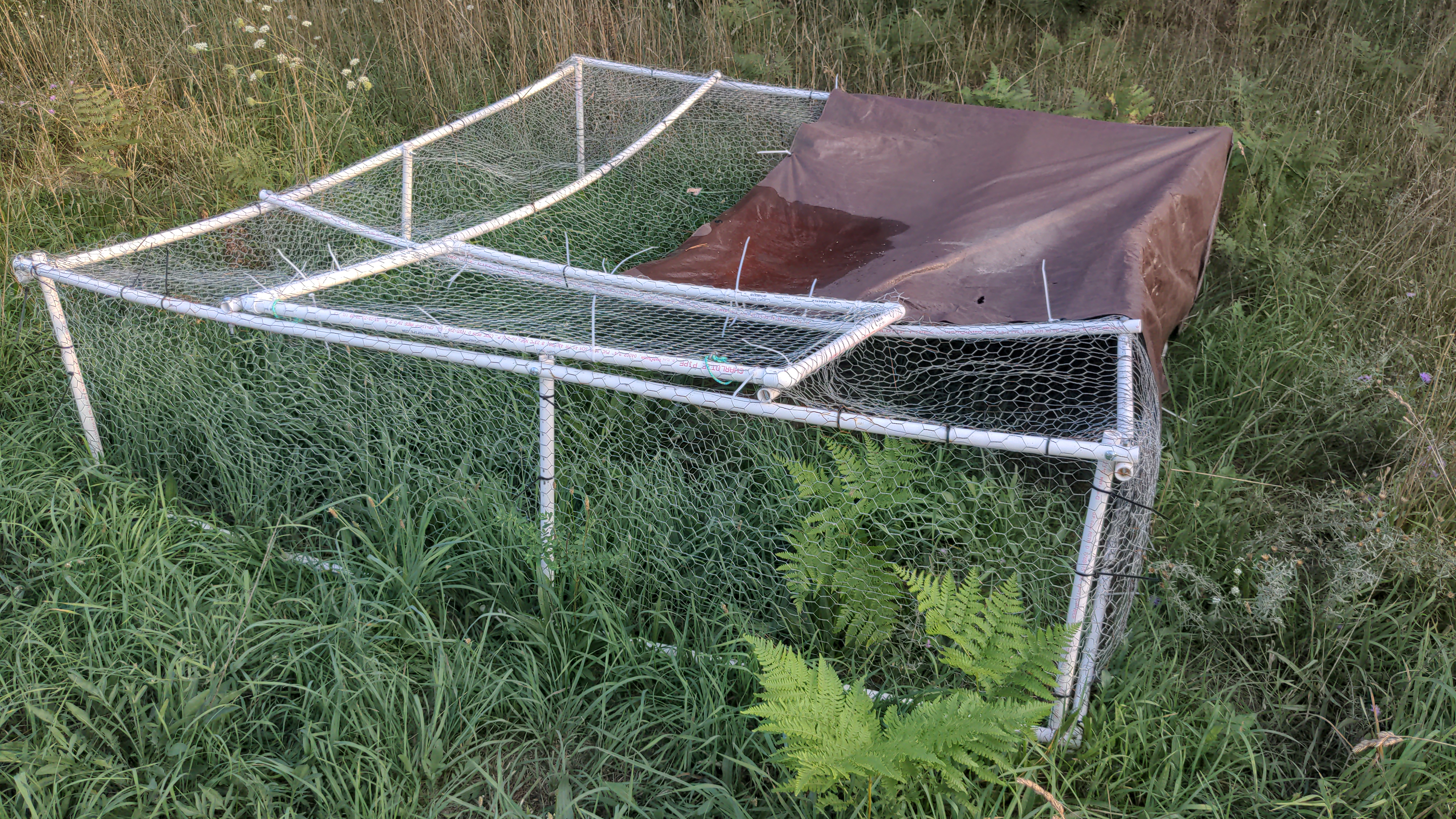When my wife and I decided to shift from hobby homesteading to "real farming" in 2020, we knew our focus would be on animal-derived fats and proteins as opposed to market gardening.

Don't get me wrong, gardens are great, but the Agenda 2030 crowd isn't gunning for your zucchinis - it's meat they're after. And if based boomer Joel Salatin has taught me anything, it's that rotational grazing is the ideal method to raise happy, healthy animals and build great soil in the process.
So naturally, we built a chicken tractor:

The idea behind a chicken tractor is simple: You raise poultry in a mobile enclosure that gives your birds access to virgin ground. They scratch at it, poop on it, chow down on wild vegetation, and yes, eat zee bugz. Once they've sufficiently cleared the land in that space, you move the enclosure to a fresh patch of pasture.
The chicken tractor has been, by far, the most successful permaculture system here on our small farm thus far.
Our chicken tractor is built out of PVC. Most you'll see online are made of lumber. There's a few reasons why we went with a PVC tractor:
- It's lighter and easier to move
- We built our tractor in 2021 when treated lumber prices were skyrocketing
- It prevents you from injuring your birds. Often times, a wing or a leg will get stuck under the tractor as you're pulling it along. Unlike a heavy lumber tractor, a PVC tractor is light enough not to break any limbs in the process.
The main drawbacks to a PVC tractor are the longevity of the PVC from UV damage and its comparatively light weight. We have to use hose stakes to keep the tractor from blowing away in high winds and preventing enterprising predators from flipping the whole enclosure over. I suppose you could paint or clear-coat the PVC to lessen the UV damage if you were so inclined.
Here's an example of just how incredible chicken tractoring is at making lush pasture:

Some people might tell you that chicken manure is too "hot" (i.e. excessive nitrogen) to put directly into your garden. That hasn't been our experience when using a chicken tractor, at least when grown in sandy soil that's had the cultivator run over it a few times. Your mileage may vary.
If you compare using a chicken tractor vs. more traditional organic soil amendments, the benefits quickly become obvious. You're getting a great product in the form of meat and prepping your garden plot simultaneously. You are, in a sense, paying yourself to amend your soil, which is pretty freakin' cool. Most people do the opposite: Pay money to heal a patch of dirt by going out and buying compost of potentially dubious quality and other such organic fertilizers or moisture retainers like peat.
Even if you're making your own compost, it can be pretty labor-intensive to produce enough for a large garden. And while we've had great luck using plant-based and self-sufficient fertilizers like comfrey, the results pale in comparison to using rotational grazing.
So if you're a gardener with sufficient space and don't live under the thumb of some pozzed HOA or local government that prevents poultry ownership, consider building yourself a chicken tractor. The end result is as effective as it is delicious.
-FF